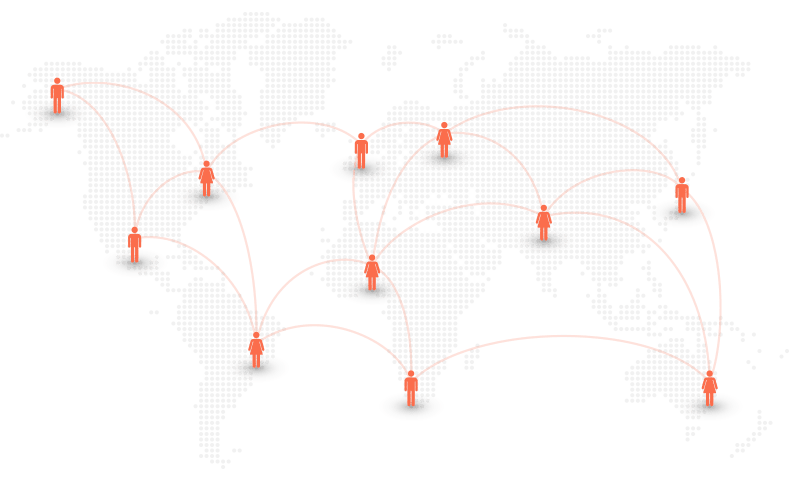
With Stepes mobile translation technology, businesses can finally get large documents translated quickly and on-demand. Companies often have to deal with the challenge of completing high-volume translation projects within tight timelines. However, old translation models are not built for scalability and don’t enable many translators to simultaneously work on the same project.
Stepes fundamentally changes the dynamics of translation by enabling a large number of translators to work seamlessly together on the same project from their mobile devices as well as on desktop computers. To do this, Stepes first breaks a document into shorter segments (content fragmentation) and then sends these micro units of text in a conversation style format to translators’ smartphones or desktop computers. At the same time, it uses a cloud-based terminology management system like TermWiki Pro to ensure the technical accuracy and linguistic consistency of all subject related terminology among translators. As each of the small pieces of text are translated, they are sent to Stepes backend servers on the cloud, which compile the translated text to create the final localized document.
Shared Translations for Large Volume Requirements
Finally, large volume translation performed with speed and quality is a reality.
Does your company need large volume translation services (LVTS)? There are many business applications that require fast, high-quality translations of large volumes of digital information. For example, Google, Microsoft, Facebook and IBM need LVTS editing to train machine learning. Amazon, Netflix, and TripAdvisor need LVTS for large amounts of user generated content in real time, and GSK, Pfizer, and other life sciences companies must translate large volumes of content quickly in order to meet regulatory compliance deadlines.
While machine translations (MT) are fast and scalable, MT quality is inadequate for customer facing content. Good quality translation requires strong technical knowledge and an understanding of cultural nuances that only a human translator can master. However, traditional translation services do not have the technological infrastructure and scale to meet these very large translation requirements.
This is why you need Stepes, a modern LVTS platform that is powered by the largest network of translators globally connected through both desktop and mobile channels. Stepes is the language industry’s first big translation solution to meet our clients’ large volume translation needs in this fast-paced digital economy.

How it Works
Stepes’ distributed translation platform automates the provisioning of translation services to its large network of professional translators who are organized based on subject matter expertise in addition to their linguistic capabilities. Each translation project must specify the target industry field such as medical, legal, financial, or technical which allows Stepes to easily identify the most qualified translators on its network for best results. Once Stepes identifies a list of professional linguists with matching qualifications, it sends translation requests to selected translators via mobile notification which ensures the fastest response. Translators who elect to accept the request can immediately begin translation directly over their mobile devices or on their desktop computers.

Ensuring Translation Accuracy and Consistency
Stepes is powered by the world’s largest multilingual terminology management system (TermWiki.com) so that Stepes translators can access industry terms and translation assistance as they work, ensuring technical consistency and linguistic quality. TermWiki.com has collected millions of terms in over 100 languages and 1,700 industry fields. Business can also use TermWiki Pro to manage their own terminology in a private cloud. Stepes flawlessly integrates terminology translation into its mobile powered translation process to deliver fast, high quality results.

Case Study: Translating Harry Potter into Chinese in One Hour
Stepes mobile and distributed translation model makes previously unthinkable challenges a reality. As a demonstration, Stepes created a test case in which 1,000 English to Simplified Chinese translators are selected to translate the Harry Potter novel (Order of the Phoenix) which has roughly 200,000 words into Simplified Chinese via their smartphones. Stepes breaks up each chapter into multiple logical units so each translator translates roughly 200 words during the given time. To ensure translation consistency, characters, places, and object names are pre-translated in the novel so translators can readily use the unchangeable Chinese names.
Quite often a novel that is translated by a single translator has a tendency to read really well in the first couple chapters, then becomes dull toward the middle part of the book, to finally a “hurry up and finish” quality in the final chapters. For the Stepes volume translation model, each chapter is handled by a team of translators who start out fresh. As a result, the creativity carries through the entire translated novel making it much more engaging and interesting to readers.
